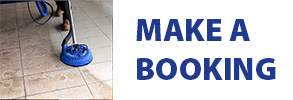
Leather Cleaning & Restoration USING THE CLEAN & DRY CARPET AND TILE CLEANING and effective Leather Products
Why Choose CleanDry to maintain your Leather?
With regular cleaning and protecting you can prevent undue wear on your leather furniture and keep it looking great.
How Do I Know My Leather Is Dirty? Signs and Tips for Maintaining Leather Upholstery
1. Visual Indicators of Dirt and Grime
One of the most obvious signs that your leather is dirty is its visual appearance. Here are some indicators to look out for: Dullness: Leather that once had a rich, glossy finish may appear dull and lifeless. This can be a sign that dirt and oils have built up, preventing the natural sheen from shining through.
One of the most obvious signs that your leather is dirty is its visual appearance. Here are some indicators to look out for:
- Dullness: Leather that once had a rich, glossy finish may appear dull and lifeless. This can be a sign that dirt and oils have built up, preventing the natural sheen from shining through.
- Stains: Spotting stains is a clear indicator that your leather requires cleaning. These can range from food and drink spills to pet accidents. The longer a stain sits, the harder it may be to remove.
- Discoloration: Uneven patches or discoloration can signal that dirt or grime has settled into the leather. This can often happen in areas that receive frequent use, such as the armrests or seat cushions.
- Cracks or Creases: While these can occur naturally as leather ages, they can also be exacerbated by dirt and lack of moisture. If your leather shows cracks, it may be time for a thorough cleaning and conditioning. Uneven patches or discoloration can signal that dirt or grime has settled into the leather. This can often happen in areas that receive frequent use, such as the armrests or seat cushions.
If your leather shows cracks, it may be time for a thorough cleaning and conditioning.
2. Tactile Signs of Dirtiness
While visual cues are essential, feeling your leather can provide significant insight into its condition. Consider the following:
- Sticky or Greasy Texture: If your leather feels sticky or greasy to the touch, it’s likely that oils from your skin, food, or other sources have accumulated on the surface. This residue can attract more dirt, making regular cleaning necessary.
- Roughness: Leather should feel smooth and supple. If it feels rough or has lost its softness, it may be a sign that dirt and debris have built up, damaging the surface.
- Dryness: While not directly related to dirt, dry leather can indicate neglect. When leather lacks moisture, it can become brittle and more susceptible to dirt and stains.
3. Smells and Odors
Leather naturally has a distinct scent, but it should not smell unpleasant. If your leather furniture emits odors, it could be a sign of accumulated dirt or moisture. Common causes include:
- Food and Drink Spills: Stains from food and beverages can lead to unpleasant smells if not cleaned promptly. These odors can linger, affecting the overall atmosphere of your home.
- Pet Odors: If you have pets, their fur and odors can become trapped in the leather, creating a less-than-fresh environment.
- Mold or Mildew: In damp conditions, mold or mildew can develop on leather, leading to a musty smell. This requires immediate attention to prevent further damage.
4. Environmental Factors
Your leather upholstery’s exposure to certain environments can also influence how dirty it becomes:
- High Traffic Areas: If your leather furniture is in a frequently used space, it’s likely to accumulate dirt and oils more quickly than pieces in less frequented areas.
- Location: Sunlight can cause leather to fade, but it can also lead to the accumulation of dust and particles. If your furniture is near windows or doors, you may need to clean it more often.
- Humidity: High humidity levels can lead to mold and mildew growth, while dry conditions can cause leather to crack. Both situations can lead to a dirty appearance.
5. Regular Maintenance Routine
To avoid reaching a point where your leather is noticeably dirty, it’s essential to establish a regular maintenance routine:
- Dust Regularly: Use a soft cloth to dust your leather furniture weekly. This will prevent dirt from settling and make cleaning easier.
- Wipe Spills Immediately: If a spill occurs, wipe it up immediately with a clean, dry cloth. Avoid using harsh chemicals, as they can damage the leather.
- Condition Your Leather: Every few months, apply a leather conditioner to keep the material supple and protected. This can help prevent dirt from adhering and maintain the leather’s natural oils.
- Professional Cleaning: Consider scheduling professional cleaning annually or bi-annually. Experts can deep clean your leather and treat any stains or issues you might not notice.
6. When to Seek Professional Help
If you notice signs of dirt or damage that you cannot manage on your own, it may be time to consult a professional. Indicators that professional cleaning is necessary include:
- Stubborn Stains: If stains persist despite your cleaning efforts, a professional service can provide specialized treatment.
- Extensive Wear: If your leather is showing signs of extensive wear, such as cracking or peeling, it’s best to seek expert advice.
- Odors: If unpleasant odors linger despite regular cleaning, professional upholstery cleaning may be required to eliminate the source.
Conclusion







